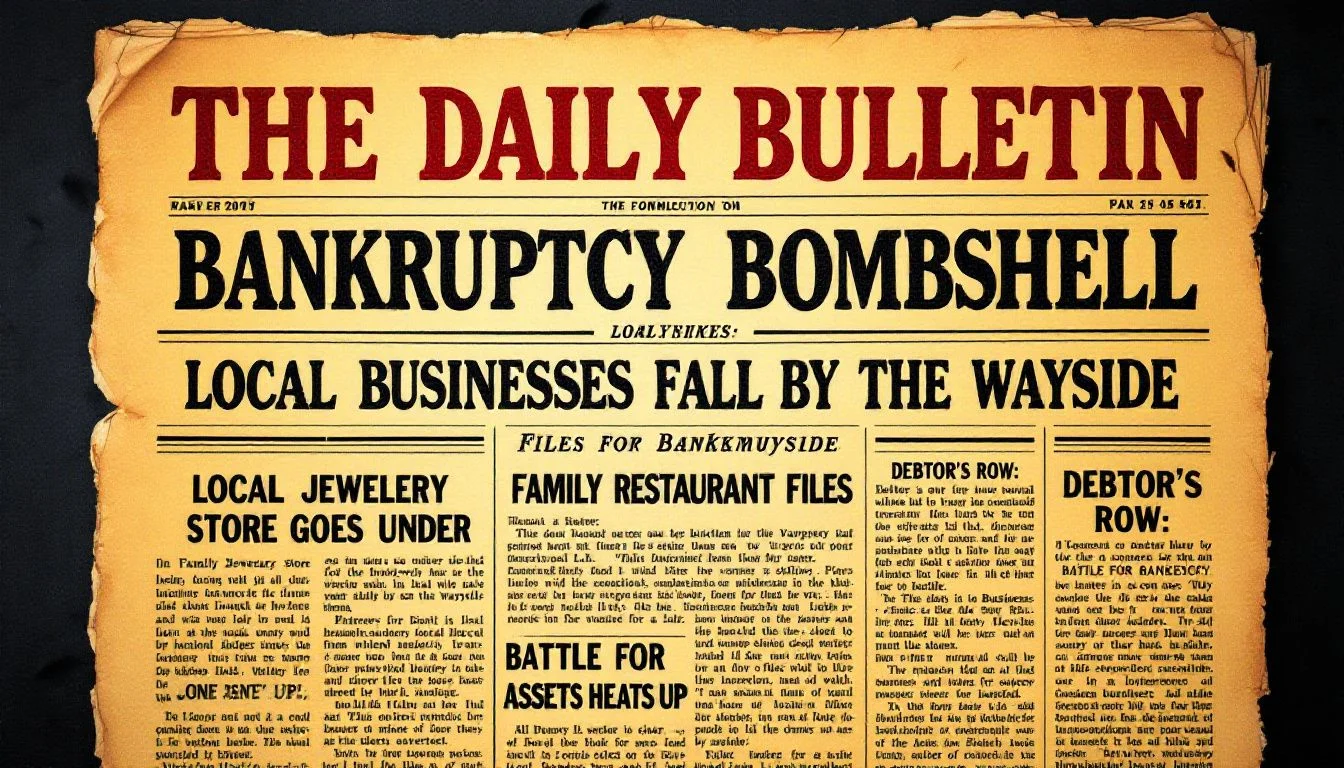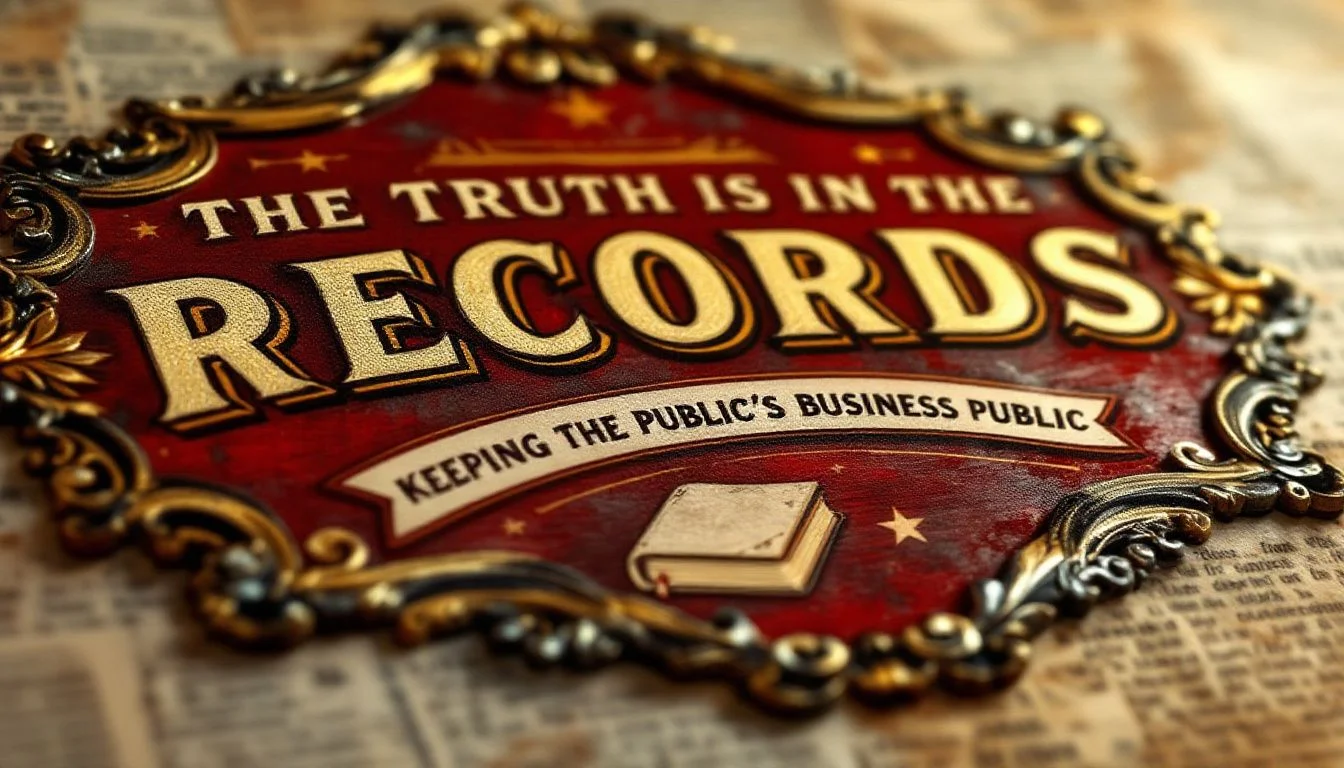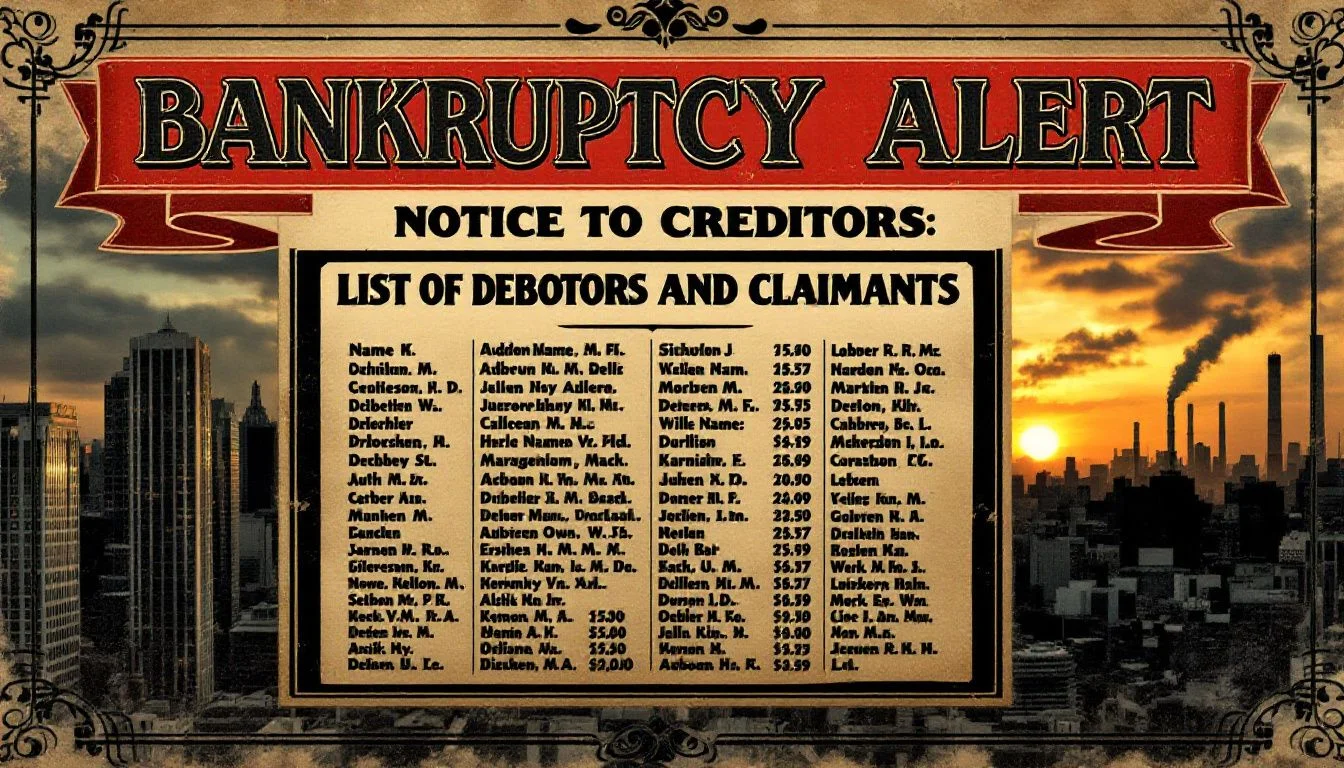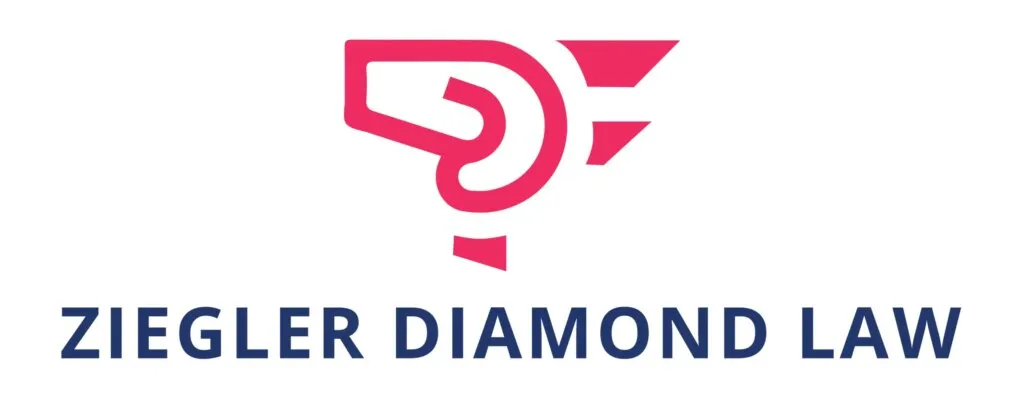Are Bankruptcies Published in the Newspaper?
Are bankruptcies published in the newspaper? One of the greatest concerns of those considering bankruptcy is how it might affect the expectations of those around them, personally and professionally. For the great majority of those who file, those people around them have no idea that they have filed. Nevertheless, bankruptcy is considered a public record, so it is important to be aware of the way it is published. Read on to find out why and where bankruptcy records can be accessed.
Key Takeaways
- Unlikely foreclosure sales, there is no requirement to publish bankruptcy information in the newspaper. Personal bankruptcies are rarely reported in newspapers, as they attract minimal public interest, unlike business bankruptcies which have broader economic implications.
- Bankruptcy filings become part of public records accessible through an online system called “PACER.” While PACER records are publicly available, it is a paid-for sign up, so it is not widely accessed by those outside of the bankruptcy industry.
- Filing for bankruptcy impacts credit scores, and bankruptcy records remain on credit reports for up to ten years, but timely payments on new credit can aid in rebuilding credit.
Are Personal Bankruptcies Published in Newspapers?

It’s a common misconception that local newspapers frequently report on personal bankruptcy cases. In reality, these publications tend to reserve coverage for instances where the individuals involved have a high profile or the financial fallout is considerable. Rather, it’s business bankruptcy filings that garner more attention due to their significant repercussions on both the economy and community.
One could uncover information about a specific bankruptcy proceeding if necessary. Business bankruptcies often find space in local papers as they are of public concern. Personal bankruptcy filings usually go unnoticed unless deliberately sought out by someone with an interest in them.
For those apprehensive about societal judgments stemming from filing for bankruptcy, they should take comfort knowing that while such records are publicly accessible, they seldom become headline news in your local newspaper.
Why Public Records Matter in Bankruptcy

The process of filing for bankruptcy results in your bankruptcy filings becoming part of the court’s public record. This access, provided through the judicial system, encourages openness and allows both creditors and members of the general populace to gain insight into an individual’s financial state. Accessing these records is made possible by the Public Access to Court Electronic Records (PACER) service, though utilizing this service involves a registration process along with certain fees.
Given that newspapers are faced with numerous cases that can overwhelm their capacity for publication, most jurisdictions abstain from publishing details about bankruptcy filings in local papers. The responsibility lies predominantly with PACER as it operates as the chief source for retrieving information on such matters—bridging transparency needs while managing logistical considerations effectively.
Why is viewing records so important? It permits various stakeholders like creditors to stay informed regarding ongoing bankruptcies and apprehend each debtor’s economic situation thoroughly. By making sure everyone involved has access to crucial data when needed, trust within the framework of the bankruptcy procedure remains intact due mainly to this open exchange facilitated by available documentation on such cases.
What Information Is Included in a Bankruptcy Filing?
The submission of a bankruptcy filing is a detailed process that entails providing an exhaustive outline of the debtor’s monetary affairs. It commences with the presentation of a structured bankruptcy petition, complete with itemized records delineating all aspects such as assets, debts, income streams, and spending habits. These detailed listings portray an exact financial condition at both the moment one elects to file for bankruptcy and when they have officially filed for it.
Within the breadth of this filing lies a comprehensive account outlining recent fiscal activities encompassing earnings received by the debtor along with expenditures made and any property sold or transferred. Furnishing such in-depth information is crucial in painting an accurate representation of one’s finances to those evaluating them in bankruptcy court alongside creditors examining their exposure.
As participating entities engage in this legal proceeding, creditors are required to formally present claims against what becomes known as the ‘bankruptcy estate’. The manner in which these claims must be set out adheres strictly to predefined guidelines so that every debt claim can undergo rigorous scrutiny under judicial oversight from within said court system. Accurate documentation facilitates transparency across parties engaged concerning where financial responsibilities lie amidst restructuring through formal insolvency protocols.
Where Can You Find Bankruptcy Records?

Bankruptcy proceedings are handled within the realm of federal bankruptcy courts, and these court records can be accessed with some knowledge of navigating federal court cases. The primary system for obtaining such records is PACER, which necessitates both registration and payment to access detailed information concerning bankruptcy filings online.
Alternatively, if one wishes to bypass PACER’s fees or prefers a different route, there are other ways to acquire records on bankruptcies. By reaching out directly to the designated bankruptcy clerk at the relevant courthouse, it is possible to procure necessary documents without utilizing PACER. This may require an in-person visitation at your local county courthouse or submitting a request specifically tailored towards attaining those county court records.
In essence, while using PACER offers expediency and thoroughness in acquiring details from bankruptcy files digitally, engaging directly with a courtroom’s clerk presents another viable pathway for individuals favoring traditional retrieval methods. Each option facilitates access to data, ensuring transparent practices throughout all stages of the judicially overseen insolvency process.
Who Gets Notified About Your Bankruptcy?

Upon initiating a bankruptcy filing, various entities are automatically alerted to your case. Under federal regulations, services must promptly inform creditors once individuals file for bankruptcy to ensure they have current information on the debtor’s financial status and can act accordingly. This process of notification promotes openness and enables creditors to assert their claims and engage in legal proceedings.
Alongside notifying creditors, notifications are also sent out to co-signers and other parties that might be influenced by the bankruptcy filings. It’s essential these stakeholders stay updated regarding developments that could affect their fiscal interests. The delivery of notices is streamlined through agencies such as the Bankruptcy Noticing Center, which allows for electronic dispatch methods.
It’s noteworthy that employers are hiring. Do not receive notice about an employee’s personal bankruptcy filing unless it pertains directly to actions like wage garnishment. Consequently, in most instances an employer remains unaware when an employee has filed for bankruptcy—thereby safeguarding the individual’s privacy as well as mitigating any negative consequences professionally.
Impact on Your Credit Report
Declaring bankruptcy can have a negative impact on credit. But what I often education on is that the credit impact is “relative.” Most people considering bankruptcy are not starting with an 850 credit score; they either already have impairment to their credit from defaulted loans, or they are about to see that impairment shortly.
So while the bankruptcy, by itself, is bad for credit, when you consider that most of the credit damage has already occurred and that the bankruptcy will “zero out” the debts that are behind, it provides a clean credit slate to start building new positive credit history.
Our general experience is that most bankruptcy filers have better credit scores within 2 years of discharge than before they started, but each circumstance is different.
How to Protect Your Privacy During Bankruptcy

Maintaining privacy throughout the bankruptcy process is an understandable concern, and you can take measures to secure your private information. By seeking a protective order, you have the ability to restrict public access to sensitive data in your bankruptcy filings. This step is crucial for those possessing confidential business knowledge or proprietary secrets.
The judiciary within bankruptcy law permits documents containing delicate information to be sealed off from the public eye, preserving their confidentiality. To avoid inadvertent leaks of such information, it’s advisable that motions for protective orders are filed promptly—preferably before significant meetings—to minimize exposure risks and maintain privacy protections during proceedings.
Legal counsel remains vigilant against any activity that might inadvertently reveal confidential details. Lawyers who grasp their client’s daily business activities and discern potential vulnerabilities proactively address these issues by implementing strategies aimed at safeguarding personal secrecy in financial matters.
Resources for Managing Debt
Individuals burdened by insurmountable debt and seeking bankruptcy relief can find solace in the provisions of bankruptcy. Among these, Chapter 7 and Chapter 13 stand out as viable pathways tailored to distinct financial scenarios. While Chapter 7 is designed to discharge unsecured debts such as those from medical bills and credit cards, Chapter 13 presents a structured repayment agenda spanning three to five years.
Consulting with a local bankruptcy lawyer at no initial cost could be pivotal for individuals considering filing for bankruptcy. These experts provide critical insights into various debt management strategies while aiding clients in understanding both the nuances and procedures involved in declaring bankruptcy.
Apart from pursuing legal measures like filing for bankruptcy, other avenues exist that offer assistance with managing debt more effectively – including credit counseling services offered by non-profit organizations focused on financial education or options such as debt consolidation which combine numerous obligations into one loan possibly featuring reduced monthly payments, underscoring budgeting’s crucial role in overseeing one’s finances prudently. However, we generally recommend approaching debt consolidation with caution as the industry often has high fees, and in many instances leaves consumers confused about the process, which can expose consumers to legal risks of default
Summary
It’s essential for individuals grappling with excessive debt to grasp the intricacies of the bankruptcy process. Being aware of who will be notified about your filing and recognizing its effect on your credit report are key steps in managing this difficult period effectively. The public nature of records ensures that proceedings remain transparent, yet there are also provisions in place to protect personal information from undue exposure.
Declaring bankruptcy can signify a turning point, providing respite from debts that have become insurmountable and charting a course towards financial recovery. It’s important to take advantage of available resources, seek guidance from experts, and engage actively in efforts to rebuild your creditworthiness as part of securing a stable financial future. Keep in mind that declaring bankruptcy is not an endpoint. Rather it marks the commencement of more prudent fiscal management leading to renewed stability.
Frequently Asked Questions
Are personal bankruptcies published in newspapers?
Personal bankruptcies are generally not published in newspapers, as they are considered low newsworthy events, with a greater focus on significant business bankruptcies instead.
How can I access bankruptcy records?
Bankruptcy records can be obtained online using the PACER system, where registration and payment are required, or you can reach out to the bankruptcy court for help in accessing these documents.
Who gets notified about my bankruptcy filing?
Your creditors, co-signers, and certain affected parties will be notified about your bankruptcy filing, while employers generally are not informed unless wage garnishment is a factor.
How long does bankruptcy affect my credit report?
Bankruptcy can significantly affect your credit report for up to ten years, with debts marked as ‘included in bankruptcy’ during that time. But the impact is generally not so bad when given the context that most filers already have defaults in their credit, and often can provide a faster path credit recovery.
What can I do to protect my privacy during bankruptcy?
To protect your privacy during bankruptcy, request a protective order to limit public access to sensitive information and consider having the court seal documents that contain confidential details.
Taking these steps can help safeguard your personal information throughout the process.


